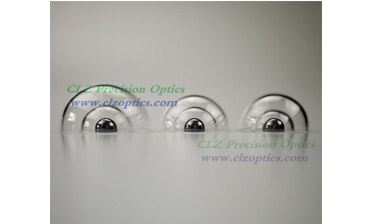What are the Requirements for Qualified Optical Glass?
Jan. 27, 2021
As a Silicon Domes Manufacturer, share with you. Optical glass can change the direction of light propagation. Optical glass is widely used in many modern high-tech industries such as aerospace, information, microelectronics, surveying and mapping with its unique characteristics of high temperature resistance, low expansion coefficient, high mechanical strength, and good chemical properties. Optical glass is widely used in lenses and prisms of optical instruments. Optical glass must meet the requirements of light imaging, so the quality of optical glass is also very high.
Glass Optical Domes
Qualified optical glass must meet the following requirements:
1. The optical constants of the optical glass and the same batch of glass must be consistent. The optical glass has a specified standard refractive index value for different wavelengths of light, which serves as the basis for the optical designer to design the optical system. Therefore, the optical constants of the optical glass produced by the factory must be within a certain tolerance range of these values, otherwise the actual imaging quality will not match the expected result during the design and the quality of the optical instrument will be affected. At the same time, since the same batch of instruments are often made of the same batch of optical glass, in order to facilitate the unified calibration of the instruments, the allowable deviation of the refractive index of the same batch of glasses is more stringent than their deviation from the standard value.
2. A high degree of transparency is required, and the image brightness of the optical system is proportional to the glass transparency. The transparency of optical glass to light of a certain wavelength is expressed by the light absorption coefficient Kλ. After the light passes through a series of prisms and lenses, part of its energy is lost by the interface reflection of the optical parts and the other part is absorbed by the medium (glass) itself. The former increases with the increase of the refractive index of the glass. For high-refractive-index glass, this value is very large. For example, the light reflection loss on a surface of counterweight flint glass is about 6%.
Due to the high hardness, high strength, and brittle texture of optical glass, traditional cutting methods are difficult to meet manufacturing tasks, so precision and ultra-precision processing of these materials has become an important research direction in the field of advanced manufacturing technology. Optical glass has high hardness, which limits the choice of cutting tools; it is brittle in texture and prone to cracks and pits on the machined surface, which seriously affects the quality and accuracy of its surface. Due to the extremely poor machinability of optical glass, ancient grinding, grinding, and polishing techniques have been used for processing in the past. However, this kind of processing method has low production efficiency, difficult to guarantee the processing accuracy, and the processing process is not easy to realize computer control. It can not even process workpieces with complex surface shapes. Therefore, it is far from meeting the requirements of modern high-tech development and high efficiency.
Our company also has Glass Optical Domes on sale, welcome to contact us.





















